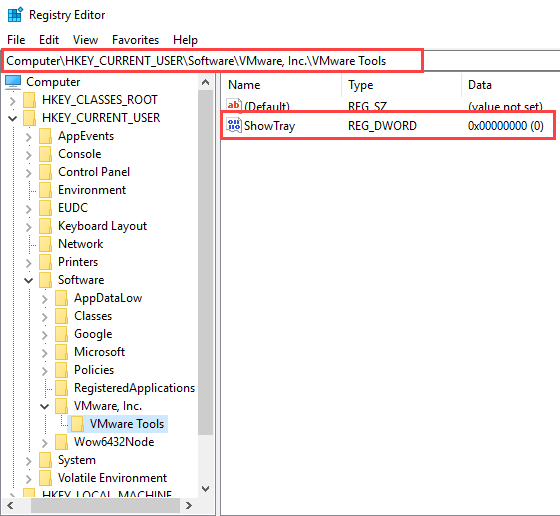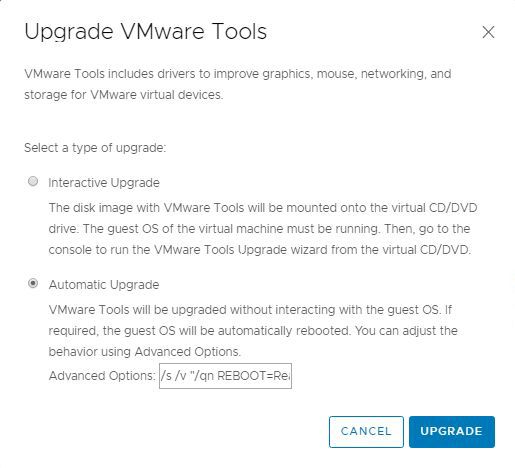

- #WHAT IS CURRENT VMWARE TOOLS FOR WINDOWS MAC OS#
- #WHAT IS CURRENT VMWARE TOOLS FOR WINDOWS INSTALL#
- #WHAT IS CURRENT VMWARE TOOLS FOR WINDOWS UPDATE#
- #WHAT IS CURRENT VMWARE TOOLS FOR WINDOWS ARCHIVE#
#WHAT IS CURRENT VMWARE TOOLS FOR WINDOWS UPDATE#
In-guest update – delegating control to app owners.VMware Update Manager: immediate, scheduled, or on boot.Initiate update to one or more VMs through the vSphere UI.The key methods of updating VM Tools ISOs for Windows and Linux: Other supported guests, such as FreeBSD and Solaris, must be updated using the same interactive process that is used for installation. Once VM Tools ISOs for Windows or Linux guests are installed, administrators can update to subsequent releases through a range of techniques optimized for either automation or separation of responsibilities.

This infrequent operation is initiated through the vSphere interface and manually executed via familiar GUI or CLI installers. Initial installation of VM Tools is typically done immediately upon fresh guest OS install, often for a gold master template VM that will be subsequently cloned for workload VMs. VUM can also be used to update Windows and Linux VMs using the downloaded tools, as long as the ISOs have been placed in appropriate ESXi local or shared product lockers. For those that prefer to leverage a shared Tools repository, perhaps in conjunction with stateless Auto Deploy hosts, the ability to get the latest bundle of Tools directly from VMware is appealing. For environments using traditional ESXi installations and managing updates with VMware Update Manager, the original approach is still viable. The choice between using the Tools ISOs that are ESXi bundled or downloadable is a matter of customer preference and operational requirements. In the near future, ISOs for guests other than Windows and Linux will be available exclusively via download and not bundled with ESXi.
#WHAT IS CURRENT VMWARE TOOLS FOR WINDOWS ARCHIVE#
Installers for current guests are separated from those that are for older legacy guests, and each is available in both tar and zip archive formats for convenience. Starting with version 10, VM Tools ISOs are also available for download directly from MyVMware. Appropriate versions are bundled with the ESXi installer and, when applicable, ESXi patches in the form of a VIB called tools-light. There are two sources for the VM Tools ISOs.
#WHAT IS CURRENT VMWARE TOOLS FOR WINDOWS MAC OS#
The most familiar mechanism for consuming VM Tools is the collection of ISO images containing installers that are mounted to virtual machines for use by Windows, Linux, Solaris, FreeBSD, Mac OS X, and other supported guests.

The Classic VM Tools ISOs for all Supported Guests This article provides an overview of these types and the next covers available options for keeping VM Tools up to date. Click Yes to continue.Īfter the VM restarts, the VMware Tools installation is complete.įor more information about installing VMware Tools on other operating systems like Linux, read more here.Three different types of VM Tools are available, intended to accommodate the range of workflows required in heterogeneous datacenters. Since it is Windows, VMware Tools will need to restart the VM in order to fully complete the installation of VMware Tools. Wait for it to finish.įinally, click Finish to finish the process. The VMware Tools installation process is in progress. For more advanced customization, select Complete or Custom. In a typical installation of a VM, select Typical and then Next to continue. Alternatively, if the message is gone, open File Explorer, enter the contents of the DVD and run Setup.exe.Ĭlick Run setup64.exe to start the process. Tap on the message that will appear to continue. You will then see that the virtual DVD of VMware Tools has been loaded into VM’s DVD drive.
#WHAT IS CURRENT VMWARE TOOLS FOR WINDOWS INSTALL#
Install VMware Tools on Windows and Windows Server VMsĪfter you have finished installing the operating system and logged in with a Windows Administrator account, open the VM menu and click Install VMware Tools. The steps below were done on a Windows Server 2016 installation, but the process is the same for all recent versions of Windows and Windows Server.


 0 kommentar(er)
0 kommentar(er)
